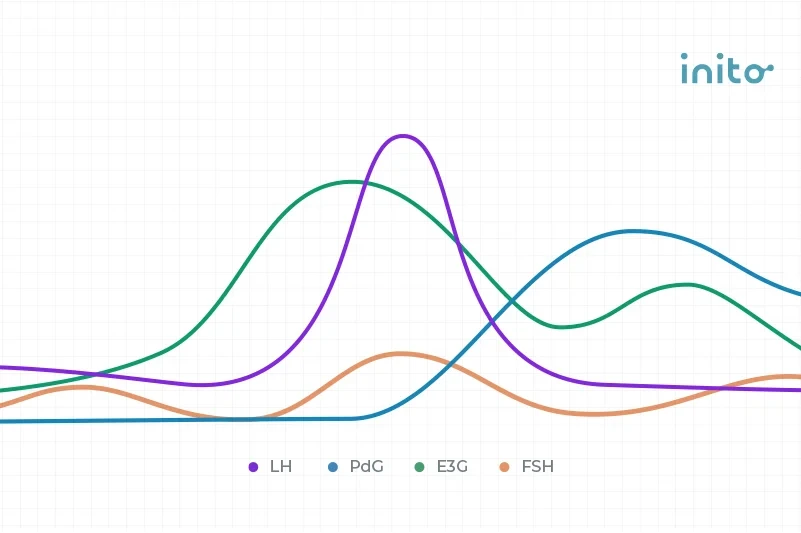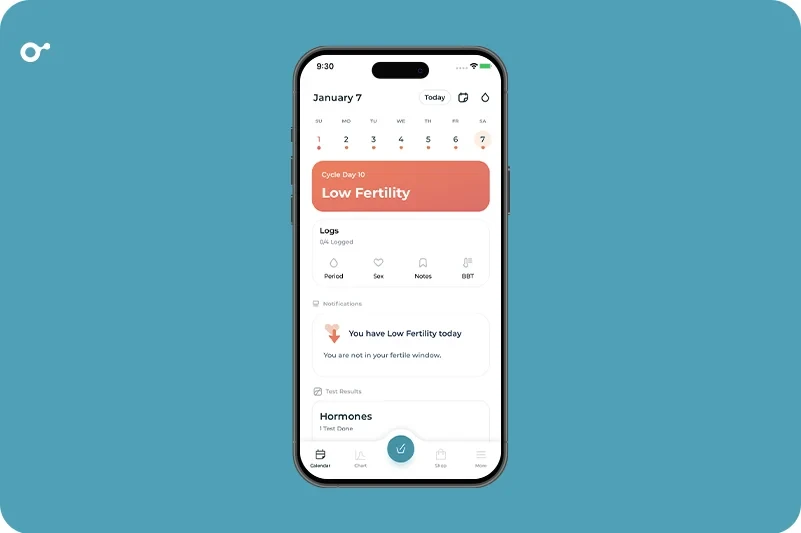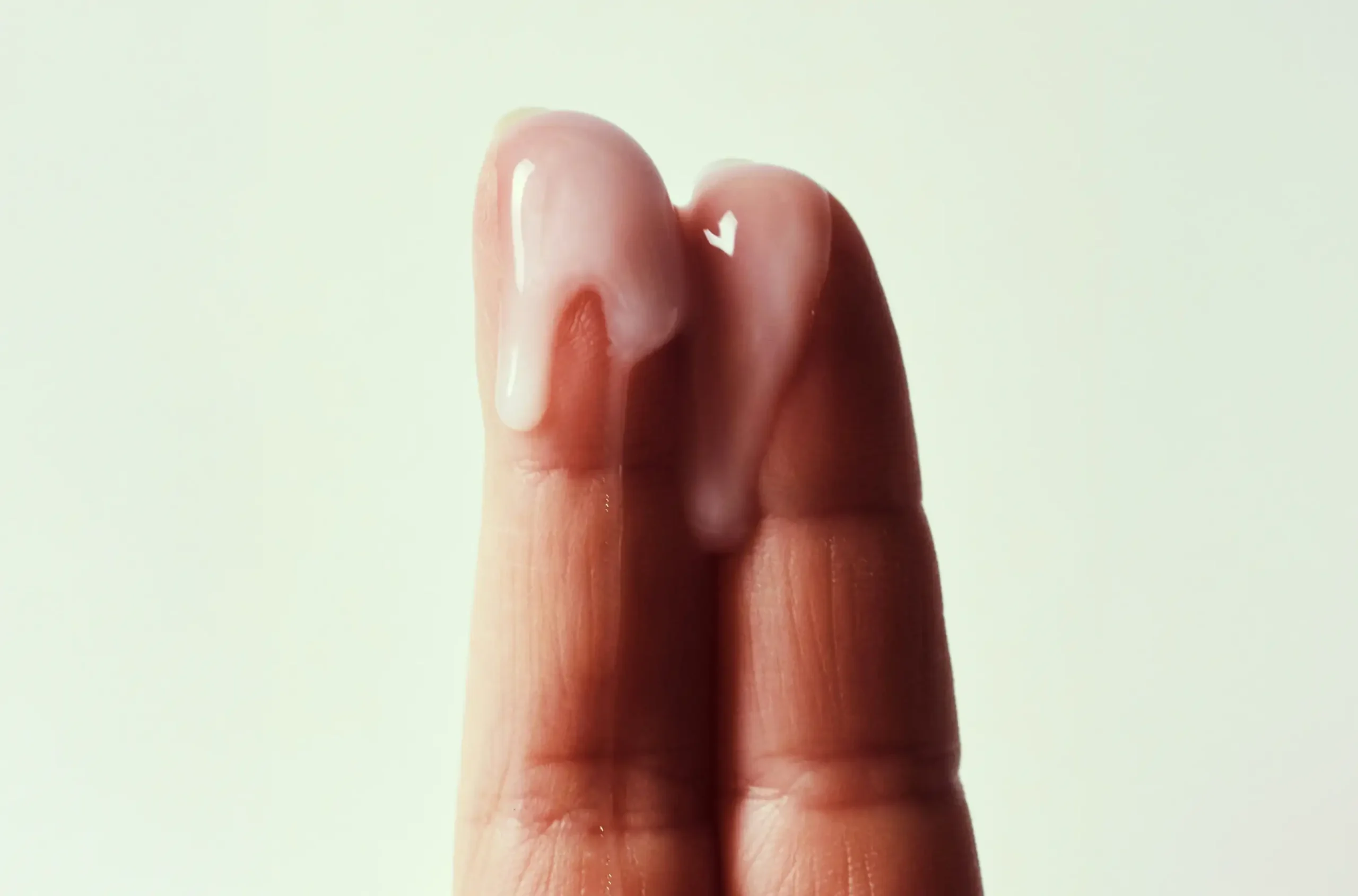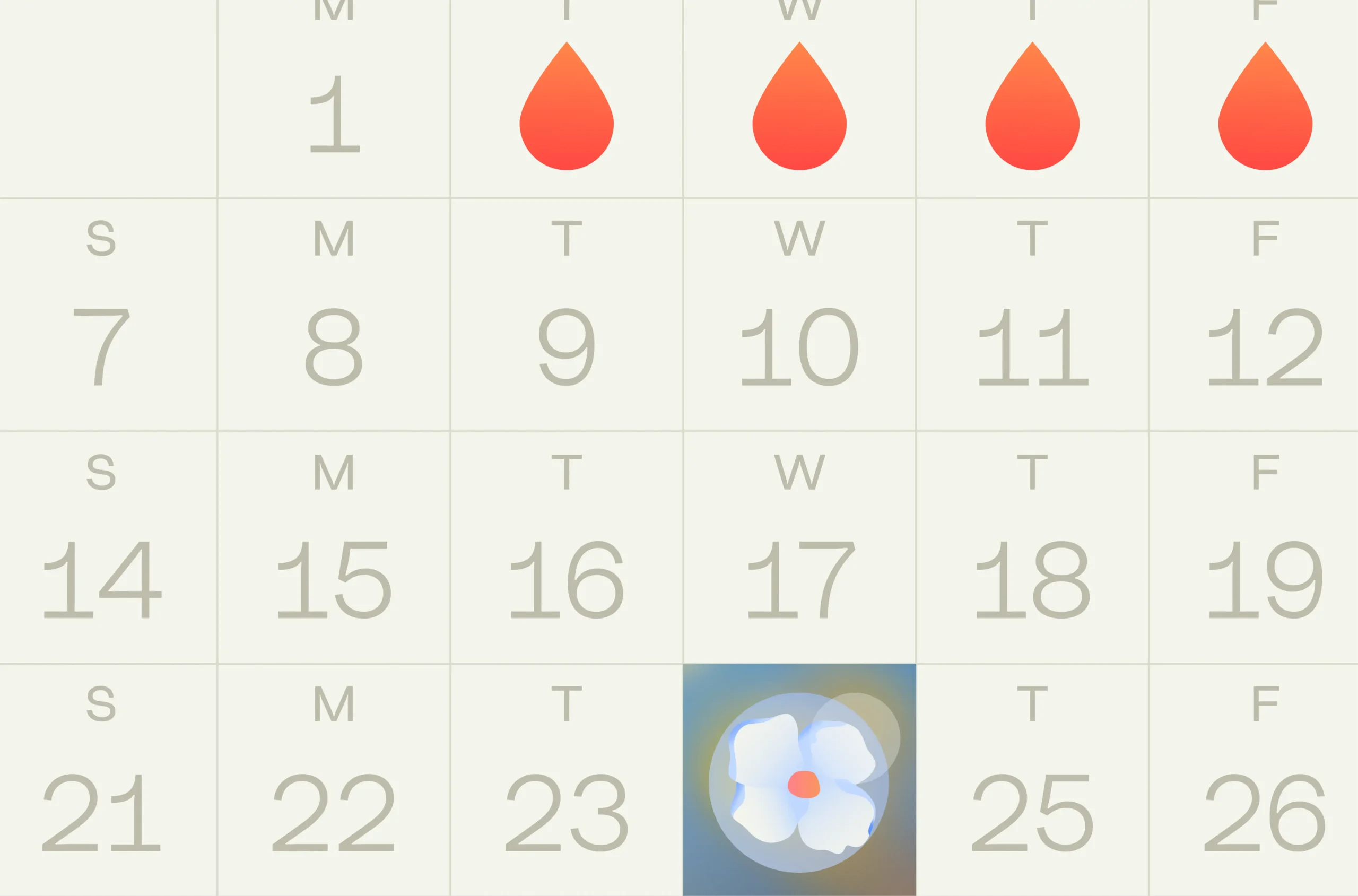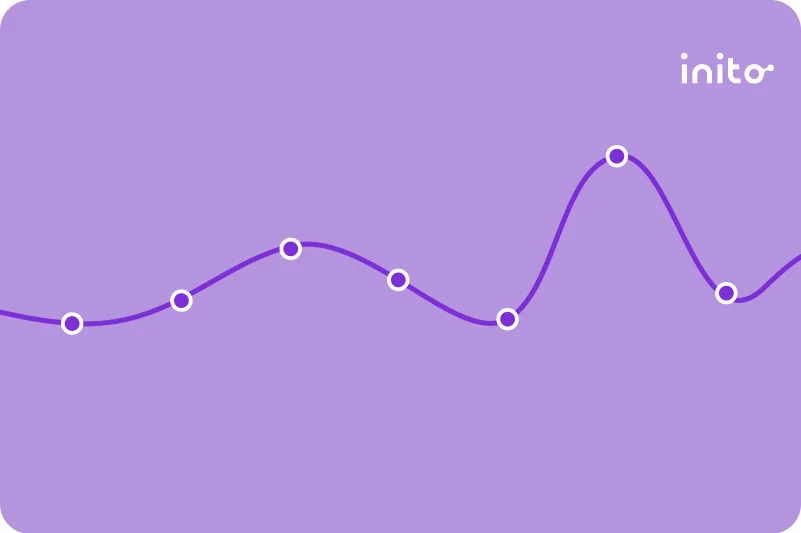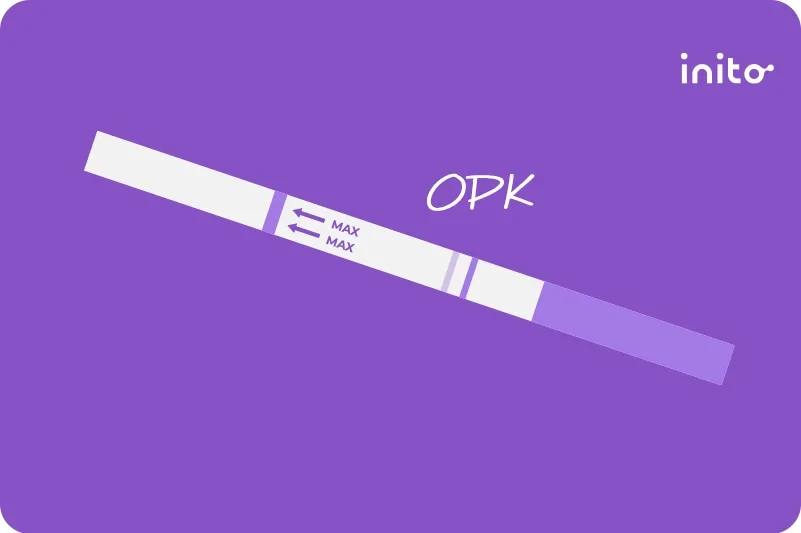Content table
You want to get pregnant (and you know Inito can help), but you’re not sure where to begin.
Well, you’re in the right place.
This “Master Your Hormones” guide will walk you through how to understand your hormones and how the Inito Fertility Monitor can help you along your trying-to-conceive journey.
The basics of your hormones and menstrual cycle
Let’s review the menstrual cycle for a better understanding of hormone fluctuations and how they affect your ability to get pregnant.
There are four key players to keep in mind. The four fertility hormones are as follows:
- Follicle Stimulating Hormone (FSH)
- Luteinizing Hormone (LH)
- Estrogen
- Progesterone
Let’s take a look at how these hormones fluctuate throughout your menstrual cycle.
The menstrual cycle consists of: the preovulatory phase and the postovulatory phase.
Preovulatory phase
This marks the phase before ovulation.
Cycle Day 1 (CD 1) is the first day of your period. Your period may last for 2-8 days. During this time, your hormone levels are low.
Around CD 5, the anterior pituitary gland in your brain releases Follicle-Stimulating Hormone (FSH). This triggers the follicles on your ovaries to start growing. Each of these follicles contains an egg.
One of the follicles grows the largest and becomes the dominant follicle. This follicle then begins secreting estrogen, and your estrogen levels start rising above baseline. You are entering your fertile window, which means ovulation is soon.
Your fertile window is the 4 days before ovulation, the day of ovulation, and the day after ovulation.
The rise in estrogen before ovulation has two main effects:
- It tells your pituitary gland to stop releasing FSH.
- It tells your pituitary gland to start producing Luteinizing Hormone (LH).
LH is the hormone that triggers ovulation. Ovulation, the release of an egg from the ovary, usually occurs 12-14 days before your next period.
LH surges 24-36 hours before ovulation and peaks around 8-20 hours before ovulation. This is the prime baby-making time! This is when your fertility is the highest, and you have the best chance of getting pregnant.
Your LH levels may remain high for a few hours or up to 3 days.
Note: Start testing your baseline hormone levels with Inito from CD 6 onwards for the most accurate results.
See how your hormone chart might look like!
Answer some questions to help us provide you a free personalized hormone chart customized to your hormonal health and conditions
Postovulatory phase
After ovulation, the ruptured follicle leaves behind a structure called the corpus luteum, which secretes progesterone.
Progesterone plays an important role in preparing and maintaining the body during pregnancy. High progesterone levels increase blood flow to the uterus and thicken the uterine lining. The thickening of the uterine lining is vital so an embryo can attach and grow.
Note: Inito measures the urine metabolite of progesterone, which is noted as PdG.
Progesterone will tell you if you’ve ovulated or not. The rise in progesterone typically occurs 6-8 Days Past Ovulation (DPO), but it’s normal if it takes longer.
Now, here it comes.
The dreaded two-week wait.
This is referred to as the “two-week wait” because you have to wait about two weeks to confirm pregnancy.
If fertilization occurs, then implantation can occur around 6-12 DPO. Implantation is the process in which the embryo burrows into the uterus. During this time, the placenta is forming. It starts producing progesterone and Human Chorionic Gonadotropin (hCG) a.k.a. the “pregnancy hormone”. Pregnancy tests detect hCG to confirm pregnancy.
If the egg doesn’t get fertilized, then the corpus luteum starts to disintegrate around 9-11 DPO. Progesterone levels drop, your uterine lining starts shedding, and your period starts.
It can be disheartening if fertilization and implantation are not successful. But don’t give up. 75% of couples get pregnant within the first six months of trying.
A Quick Recap
|
What does Inito measure?
Inito is a fertility monitor that measures all four fertility hormones on a single test strip. With Inito, you can track FSH, estrogen metabolite E3G, LH, and PdG (urine metabolite of progesterone) in your urine.
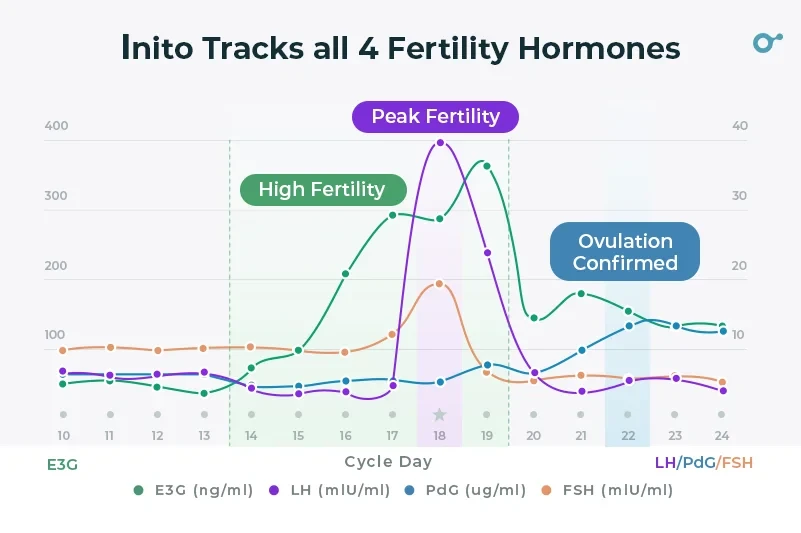
What do my Inito results mean?
Now let’s take a look at the different results you may receive while using Inito. It’s important to understand what each result means so you can time sexual intercourse to increase your chances of getting pregnant.


Low fertility
This is the result you will probably see most often. This means you have a low chance of getting pregnant.
This occurs before and after your fertile window when estrogen and LH levels are low.
- Before your fertile window: Your chances of pregnancy are low because you have not ovulated. Your estrogen and LH levels have not risen, and you have not released an egg yet.
- After your fertile window: Your chances of pregnancy are low because ovulation has ended. If ovulation occurs, your progesterone levels and its urine metabolite PdG levels will be on the rise.
High fertility
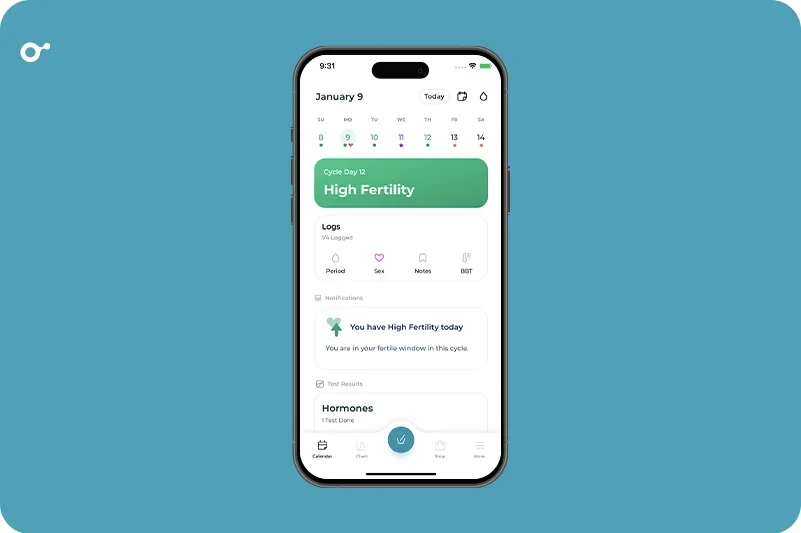
Green means go! This notification appears on your chart as a green highlight and signals that you are in your fertile window. You have a high chance of getting pregnant.
When you receive this result, estrogen levels are rising above baseline levels, and ovulation will occur soon. Your fertile window includes the 4 days before ovulation, the day of ovulation, and the day after ovulation.
Plan to have sex every other day (or more!) during your fertile window. Sperm can stay in your reproductive tract for up to 5 days, so your bedroom moves will not be in vain.
Peak fertility
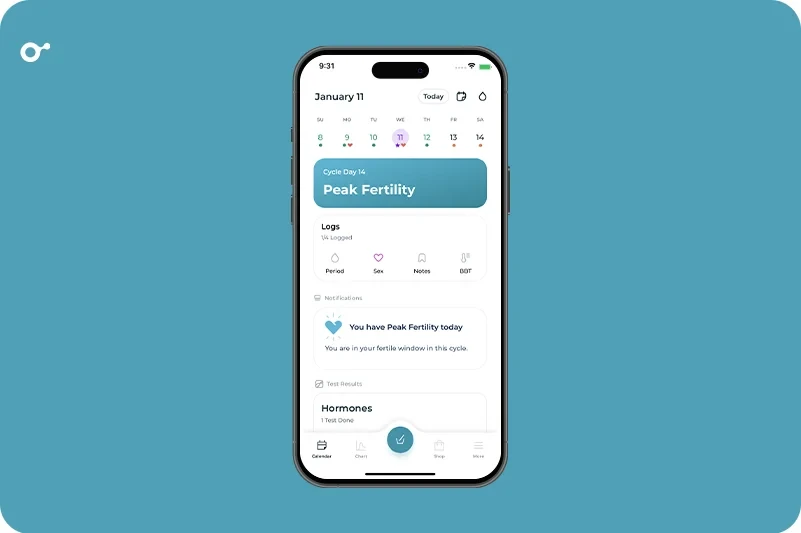
Peak fertility means it is peak baby-making time. This signals your LH levels are rising, and you will ovulate within the next 24-36 hours.
This is the time when you have the highest chance of becoming pregnant!
This will appear as a purple highlight on your chart.
Ovulation confirmed
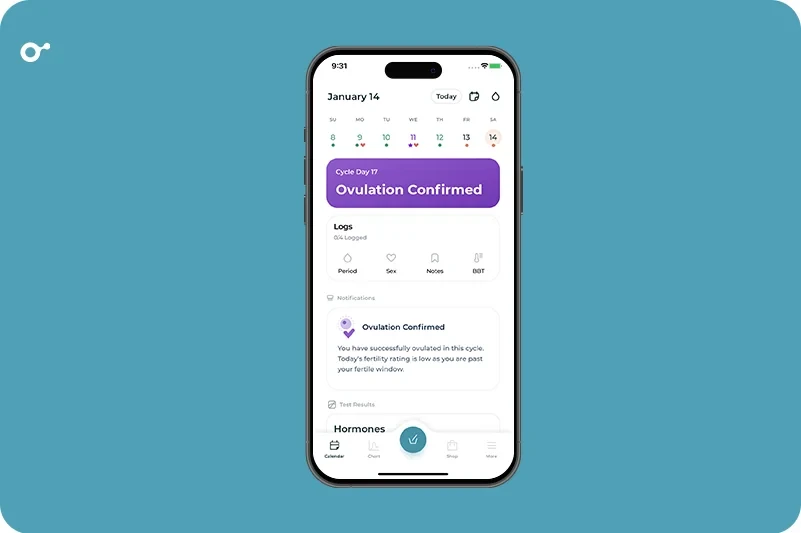
Once you have ovulated, there is a consistent rise in PdG levels. Once Inito recognizes this consistent rise, you will receive this result.
It can take a few days for this rise, so don’t worry if it’s taking longer than you might expect. Progesterone and its metabolite PdG levels peak around 6-8 DPO.
This will appear as a blue highlight on your chart.
Waiting for PdG rise
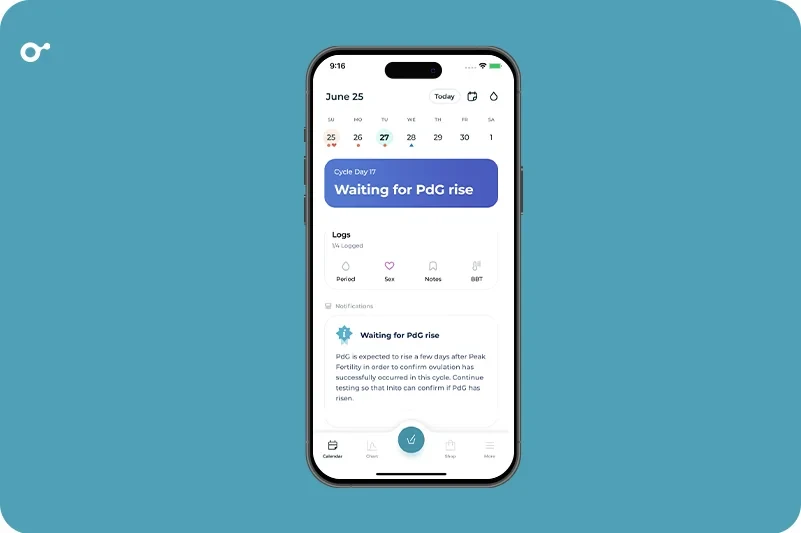
Inito requires a steady and consistent rise in your PdG levels to confirm ovulation. You may see your PdG levels gradually rising on your charts, but you may not have received the “Ovulation Confirmed” message yet. This is normal because it can take a few days to confirm ovulation. You’ll receive a “Waiting for PdG rise” result during this time.
It can be nerve-wracking waiting to confirm ovulation, but our advice is to try not to fixate too much on your levels and keep testing.
Not ovulated
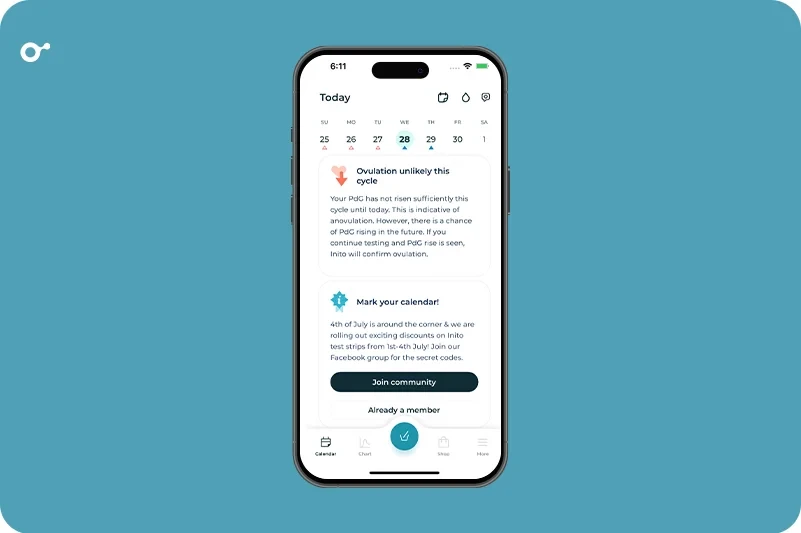
You will receive this notification if you are near the end of your cycle and your PdG levels haven’t sufficiently risen. This signals that you did not ovulate. This is considered an anovulatory cycle. These can occur a few times throughout the year, so if it is a one-time occurrence, then there is no need to worry.
But if you experience more than two anovulatory cycles in a row, it’s best to consult your OB/GYN.
Help! Why does my chart look different?
Are you looking at your charts and wondering if they’re normal?
Well, there’s not really a “normal” when it comes to your hormones. Your values may change daily and are affected by many factors.
You may not experience “textbook” hormone fluctuations.
Let’s look at why your charts may have a bit more character.
Multiple LH surges

You might see multiple LH peaks in your cycle but receive only two “Peak Fertility” results if you experience more than one LH surge. This does not mean that you ovulate more than once per cycle. Your true LH surge will be followed by a rise in PdG levels. Continue testing to catch your PdG rise and confirm ovulation.
Continuous high fertility with no peak fertility
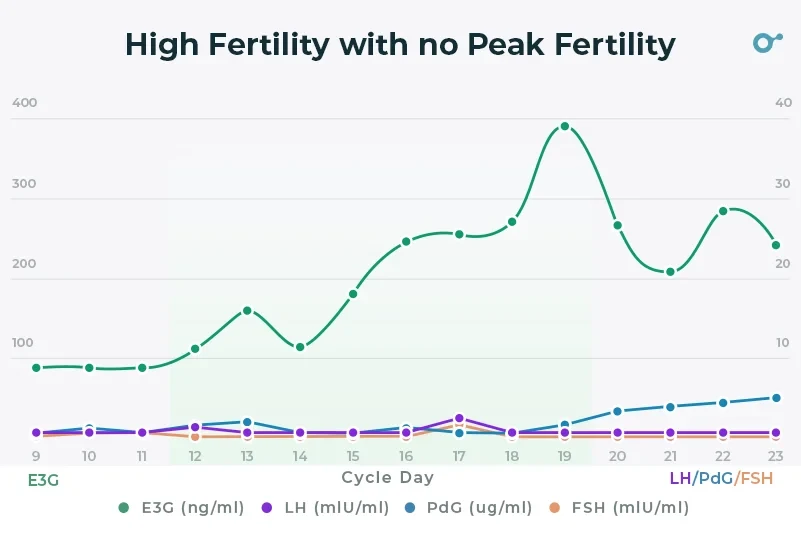
When your ovary is preparing to release an egg, your E3G levels are high. You will get a “High Fertility” result because ovulation is soon.
If your E3G levels stay high but you don’t have an LH surge within 8 days, then you’ll drop back to “Low Fertility”.
Why is this?
Well, the Inito app is programmed to show a maximum of 8 “High Fertility” days. But don’t worry. This won’t have a negative effect on your tracking.
This probably occurred because you weren’t actually in your fertile window or because you didn’t ovulate this month. Continue tracking, and if this pattern keeps repeating, consult your OB/GYN.
Direct peak fertility with no high fertility
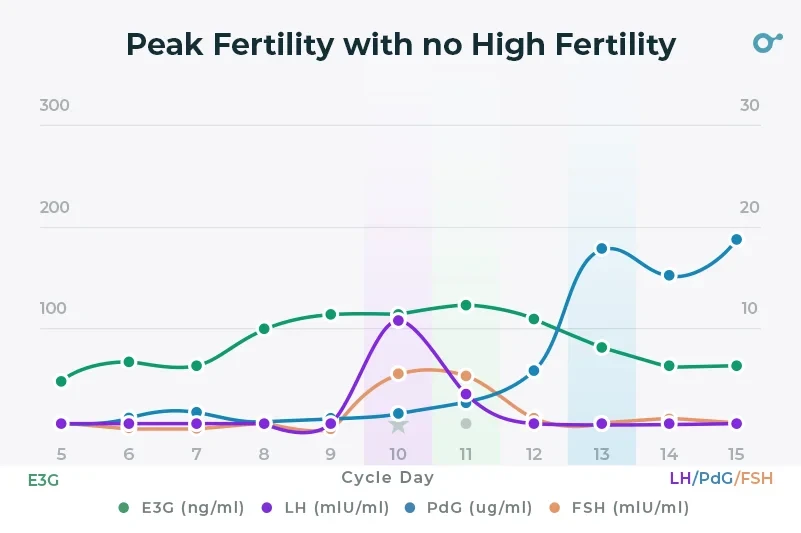
On the other side of the coin, you may receive a “Peak Fertility” result without any “High Fertility” days.
This can happen for two reasons:
- There weren’t enough baseline levels for Inito to predict your fertile window.
- Your E3G levels did not rise as much from the baseline levels.
The best solution for this? Keep testing.
It takes about 2-3 cycles for Inito to understand how your body works.
And remember, “Peak Fertility” is the best time to have sex. So it’s time for a last-minute baby-making session!
Peak fertility immediately after high fertility
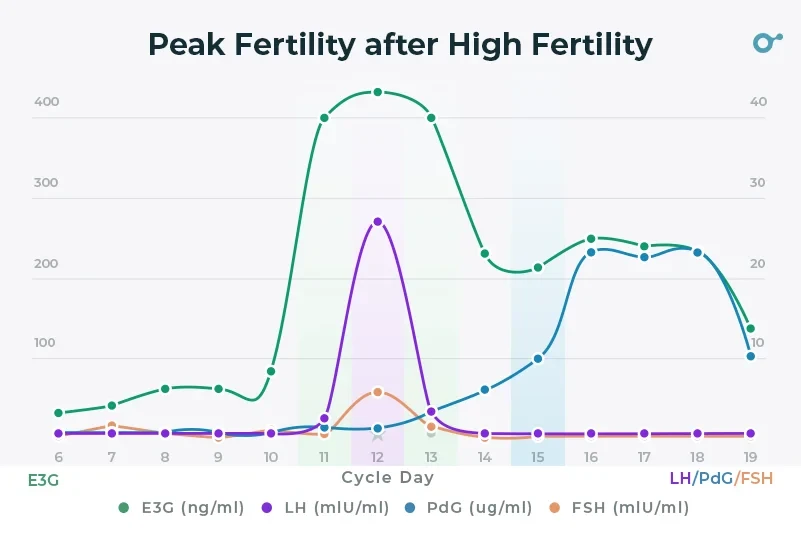
You can blame your hormones (yet again) for this one. You could receive a “Peak Fertility” result immediately after 1-2 “High Fertility” days because your E3G levels took a while to rise. And then your LH levels surge right after to trigger ovulation.
This causes you to get a “High Fertility” result close to your LH peak.
What are the reference ranges for fertility hormones for Inito?
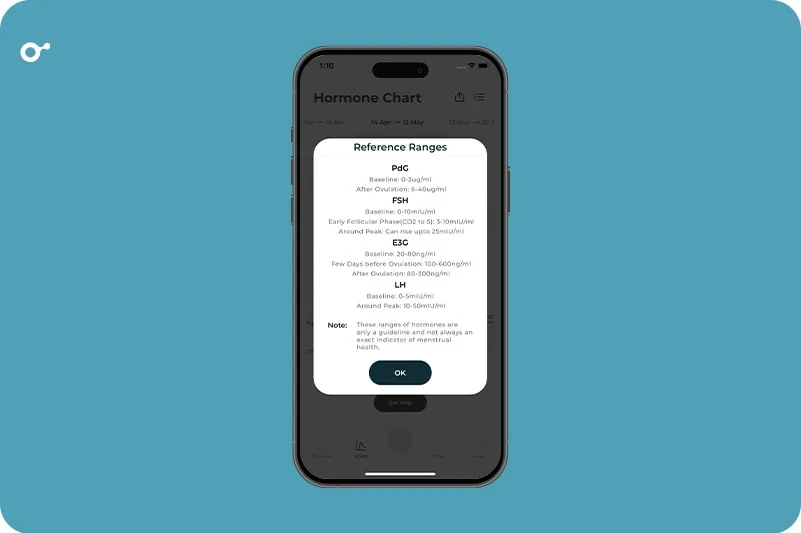
Let’s look at the normal ranges for the four fertility hormones that Inito measures.
Remember, FSH, E3G, and LH clue you into the best time to plan sexual intercourse. PdG helps you confirm ovulation.
FSH
Follicular Phase: 0-10 mIU/ml and peaks up to 25 mIU/ml
Luteal Phase: 0-10 mIU/ml
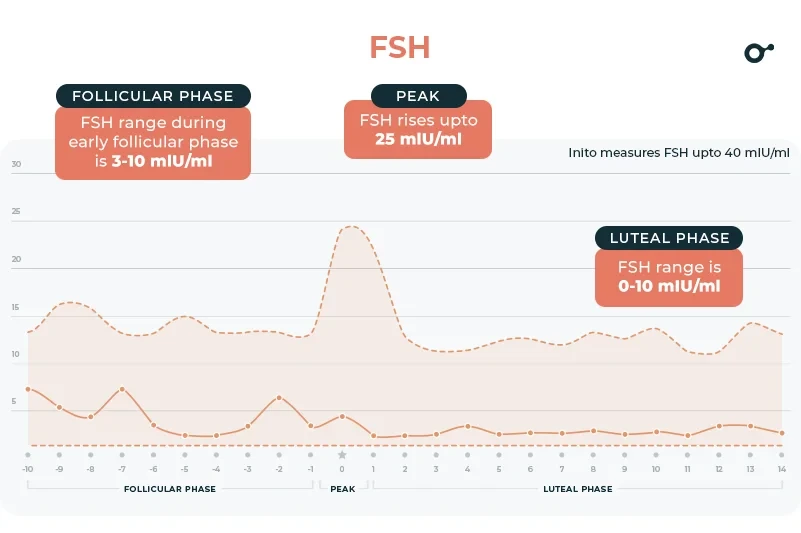
E3G
Follicular Phase: Rises to 100-600 ng/ml from baseline levels of 20-80 ng/ml
Luteal Phase: Rises to 80-300 ng/ml

LH
Follicular Phase: 0-5 mIU/ml and peaks at 10-50 mIU/ml
Luteal Phase: 0-5 mIU/ml
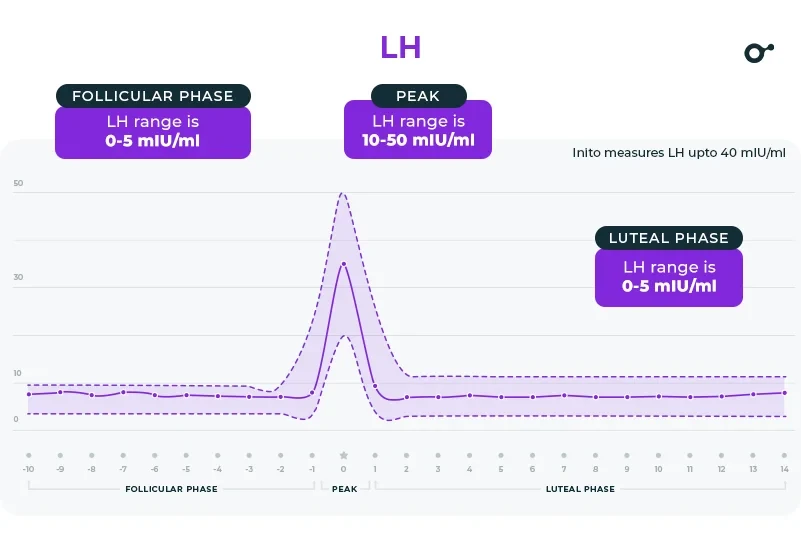
PdG
Follicular Phase: 0-3 ug/ml
Luteal Phase: Rises to 6-40 ug/ml from the baseline values
Note: Inito can measure up to the following upper limit for each hormone –
- FSH – 40 mIU/ml
- E3G – 600 ng/ml
- LH – 40 mIU/ml
- PdG – 40 ug/ml
Disclaimer – These values are for reference only. You can get pregnant outside of these ranges as well.
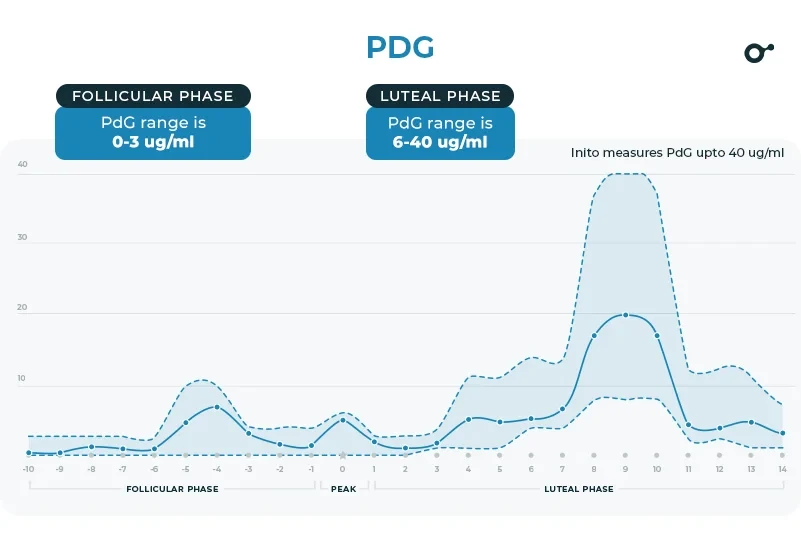

FAQs
Your first-morning urine is concentrated because you’ve been asleep (hopefully for 6 or more hours). You haven’t had much, or any, liquid to drink. This is perfect for testing your hormones because it ensures your urine is not too diluted. If your urine is diluted, you won’t receive accurate results. If you test twice a day, make sure you don’t drink too much water before your evening test.
PdG levels begin to rise after ovulation and peak around 6-8 DPO. You will receive the “Ovulation Confirmed” result once Inito detects a consistent and steady rise in your PdG levels after your LH surge.
You can begin testing upon receiving your Inito anytime during the cycle. While your actual values may be accurate, Inito won’t have access to your past hormone trends and hence you may not get accurate prompts for your fertility ratings. Our recommendation is to start testing on day 6 of your cycle because this marks the baseline reference for your hormone values.
Yes. Day 6 of your cycle marks the baseline reference for your hormone values. Starting testing on this day allows Inito to understand the trend of your overall hormone levels. This is how Inito accurately predicts your fertile window and confirms ovulation.
Avoid getting blood inside the testing cup. To minimize this, it’s best to use a tampon or a menstrual cup instead of a pad. If you accidentally get blood in the cup you may end up with skewed results.
The cool thing about Inito is that it is optimized to give you the most accurate results with the least number of tests. It learns about your body over a period of time and will prompt you to take more tests if needed.
For instance, if your PdG levels don’t rise within the expected number of days, then you’ll be notified to take more tests so Inito can confirm ovulation.
However, it won’t hurt to test on days the app doesn’t prompt you.
There’s no harm in testing twice a day. However, you don’t have to test more than once a day with Inito. You’ll get the most accurate results by testing once a day using your first-morning urine.
Inito will select the highest values of certain hormones depending on which phase of your cycle you are in.
Before the fertile window: LH levels, since LH is the dominant hormone that can track your ovulation.
During the fertile window: E3G levels, since E3G is the dominant hormone that can track your fertile window.
After the fertile window: PdG levels, since PdG is the dominant hormone to confirm ovulation.
Absolutely! If you want to learn more about your hormone levels throughout your cycle, then there is no harm in testing every day. You can also test on the days that Inito hasn’t prompted you to take a test.
Was this article helpful?
- Physiology, Menstrual Cycle – StatPearls – NCBI Bookshelf
- Menstrual Cycle Proliferative And Follicular Phase – StatPearls – NCBI Bookshelf
- https://www.ncbi.nlm.nih.gov/books/NBK441996/
- https://www.ncbi.nlm.nih.gov/books/NBK538498/
- The Normal Menstrual Cycle and the Control of Ovulation – Endotext – NCBI Bookshelf
- Physiology, Progesterone – StatPearls – NCBI Bookshelf
- Progesterone and the Luteal Phase – PMC
- Physiology, Ovulation And Basal Body Temperature – StatPearls – NCBI Bookshelf



